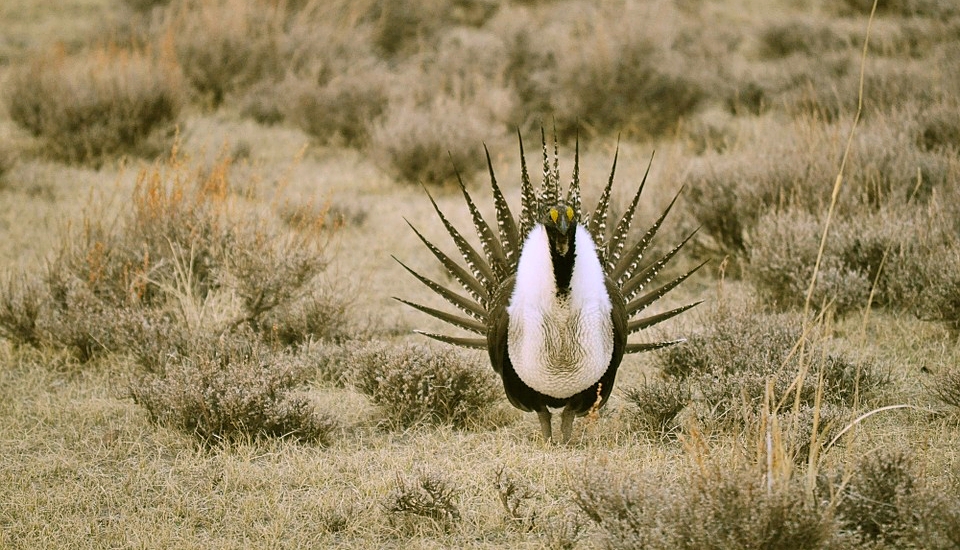Ironically, at the time the Bureau of Land Management and U.S. Forest Service finalized the harmful sage grouse plans in 2015, the bird was doing fine, with an increasing population of nearly 425,000, due to a successful incentive-based approach to conservation led by states.
Brian Seasholes
Good news for grouse & the economy
Across 173 million acres in 11 western states there is good news for a chicken-sized bird known as the greater sage grouse and for the economies of rural, natural resource-dependent communities. One of the Obama administration’s most pernicious regulatory initiatives can potentially be eliminated—15 federal sage grouse plans that cost an estimated $7.7 billion annually and 31,000 jobs, as well as harm the grouse and a host of other species that depend on the same habitat. While the plans technically cover nearly 73 million acres of federal land, they effectively impact almost all of the grouse’s habitat, including the 31% that is private, because restrictions on federal lands often impact adjacent and nearby private land.
According to Red Tape Rollback, a project of the Pacific Legal Foundation, the federal government’s 15 sage grouse plans can be invalidated through the Congressional Review Act (CRA). “Although the land use plans impose significant restrictions on activity throughout a massive area of the western states, the agencies did not submit it to Congress as required by the CRA,” states a post on redtaperollback.com. “Therefore, it cannot be legally enforced and remains vulnerable to congressional disapproval.”
The Congressional Review Act requires federal agencies to submit short reports to Congress on final regulations. Under the CRA, Congress has 60 days to review agencies regulations, depending on which of two events occurs later—final agency action or when agencies submit a report to Congress. Once the 60-day clock starts, Congress can take an up-or-down vote on whether to disapprove a regulation. If Congress disapproves and the President signs off, then the agency regulation is wiped off the books and agencies cannot in the future issue another similar regulation unless explicitly authorized through legislation.
The prospect of the 15 sage grouse plans being invalidated is good news for the grouse and rural economies because the plans are poised to do enormous harm to both. A healthy economy is necessary for a healthy environment, including for the greater sage grouse. People, families and communities under financial duress understandably care most about their well-being, such as food, clothing and shelter. Only when people feel financially secure can they afford to turn their thoughts to environmental conservation.
Ironically, at the time the Bureau of Land Management and U.S. Forest Service finalized the harmful sage grouse plans in 2015, the bird was doing fine, with an increasing population of nearly 425,000, due to a successful incentive-based approach to conservation led by states. The penalty-based approach embodied by the 15 federal plans is the surest way to harm the bird, which is apparent when compared to several realities of successful sage grouse conservation.
First, private land, not federal land, is the linchpin for sage grouse. “Wetlands are keystone features that structure [sage grouse] populations,” according to Patrick Donnelly, U.S. Fish and Wildlife Service biologist. As revealed by Donnelly’s research, over 80% of the wetland habitat grouse, especially hens and chicks, rely on in the summer is privately owned. “With 81 percent of sparse summer habitat in private ownership, sage grouse success is inextricably linked to ranching and farming in the West,” Donnelly stated.
Yet the 15 federal sage grouse plans are poised to damage private wetland habitat by eliminating and reducing permitted livestock grazing on tens of millions of acres of federal land. This will harm the sage grouse by putting ranching families under financial duress, by increasing the likelihood ranchland will be subdivided and sold (which generally decreases its ecological value), and by forcing ranchers to graze livestock more intensively and for longer periods of time on their private land in order to compensate for lost forage on federal land. While grazing and sage grouse conservation are mutually beneficial, the timing and intensity of grazing is key. Too much summer grazing in wetland areas can be harmful. “The failure of a national strategy to recognize sage-grouse dependence on private lands may result in regulations which ultimately increase sage-grouse habitat loss and fragmentation on private lands if landowners are forced to intensify management actions to offset lost revenues from public land grazing allotments,” according to comments filed by Utah about the state’s federal sage grouse plan.
Second, conservation, whether for sage grouse or any other species, means hands-on work over years, if not decades. The people best able to provide constant, hands-on conservation for the sage grouse on private and public land are the tens-of-thousands of ranchers, their families and employees scattered across the species’ habitat. Ranchers represent by far the largest conservation force for the sage grouse. Furthermore, ranchers are, by profession, land and resource managers who are very capable of implementing conservation measures for the grouse—so long as they are not punished and their livelihoods not threatened.
Third, successful sage grouse conservation is based on the incentive-based model that looks a long like cooperative extension, not the penalty-based, command-and-control approach embodied by the 15 federal plans. Cooperative extension, which is focused on gaining landowners’ voluntary cooperation through technical assistance and cost sharing to implement conservation projects, is largely based in the land grant universities in every state, including the 11 in sage grouse country. Landowners generally like cooperative extension because they respond well to the open hand of friendship, not the closed fist of regulation.
Fourth, successful conservation depends on sustainable, long-term relationships among the people involved. Cooperative extension and states are very good at fostering such relationships. By contrast, the 15 federal sage grouse plans result in mistrust and suspicion by landowners and communities toward the federal government
Former Interior Secretary, Sally Jewell, called the 15 sage grouse plans “the future of American conservation.” In reality the plans represent yet another version of penalty-based conservation, which is a lose-lose for the sage grouse and rural economies. Fortunately, the Congressional Review Act offers an opportunity to reconsider these ill-conceived and harmful plans.

Free Range Report


